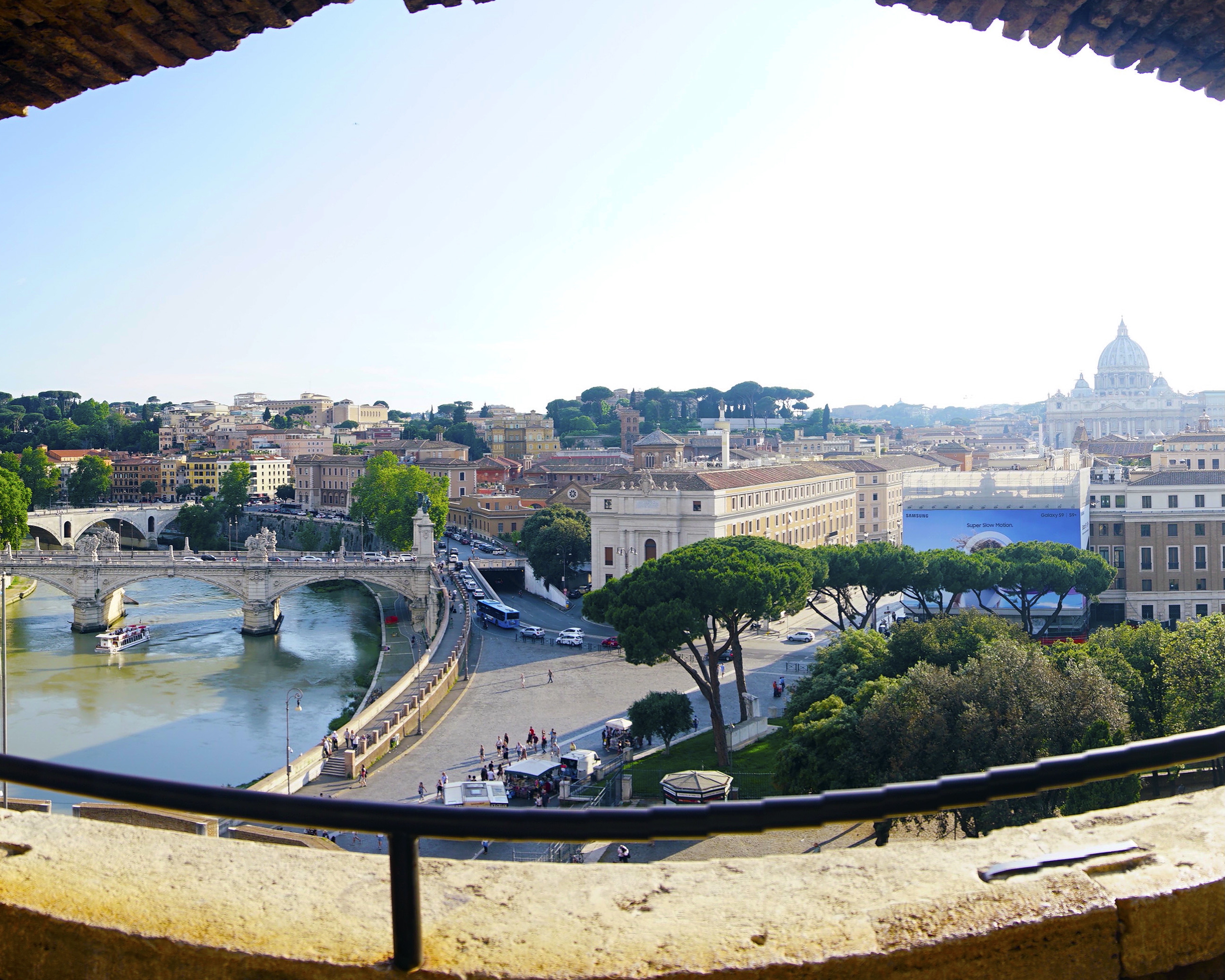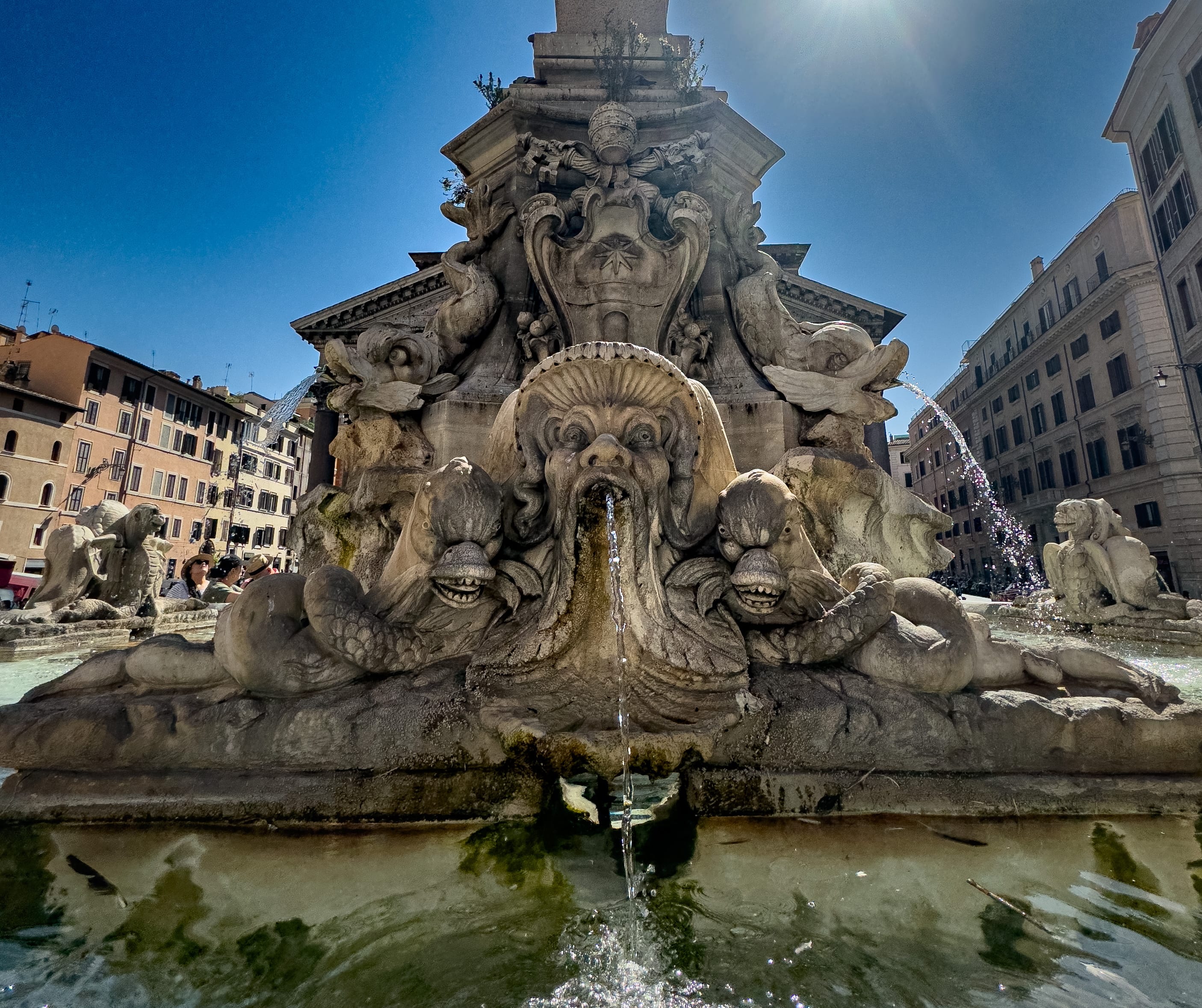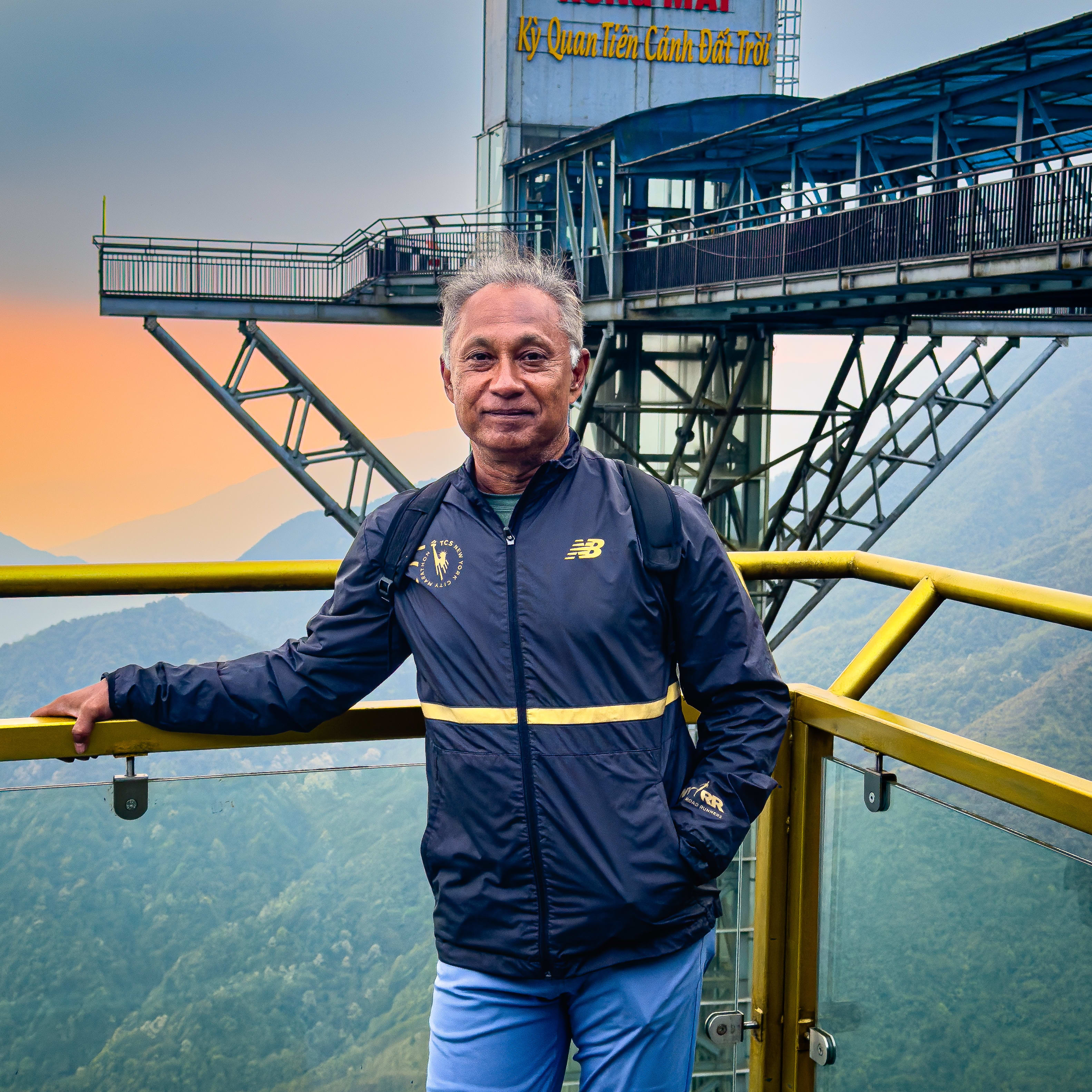
Curator’s statement
Rome is not a city you rush through—t’s a city you walk, feel, and absorb. This 3-day itinerary is based on my own recent journey through the Eternal City, blending iconic must-sees with quieter moments and local charm. Use it as a template to shape your own Roman holiday—relax the pace, savor the meals, and leave space for serendipity. Before my trip to Rome, I read Angels & Demons by Dan Brown—a fast-paced thriller that unfolds across the city’s most iconic landmarks. While the story is fictional, the book is packed with real historical references to places like Piazza Navona, St. Peter’s Basilica, Castel Sant’Angelo, and the Pantheon, along with vivid portrayals of artists like Bernini and Michelangelo. Reading it gave me a deeper appreciation for the symbolism, the history, and the layered beauty of Rome. As I walked through the very places mentioned in the book, I found myself seeing them through a different lens—noticing the shadows, the sculptures, the architecture in ways I might have otherwise overlooked. If you enjoy a good mystery with an artistic and historical twist, I highly recommend picking up Angels & Demons before your trip. It’s not just entertaining—it adds depth and dimension to what you’ll see in person.
The Fora Difference
Book with Sundar to access exclusive perks and experiences on your trip.
Killer perks
Free upgrades, spa credits and more—we got you
Personalized recs
Customized travel planning for your style
Insider knowledge
Expert advice from people who’ve actually been there
Where to stay
Unlock perks by contacting Sundar to book your trip.
Day 1: Arrival & awe: A gentle introduction to Rome

After settling in and shaking off the travel fatigue, ease into the Eternal City with something unforgettable yet unhurried—a private tour of the Colosseum. It’s the perfect way to immerse yourself in ancient Rome’s grandeur without overwhelming your first day.
The Colosseum: Rome’s timeless symbol
There’s nothing quite like standing inside the Colosseum—a structure that has witnessed two millennia of history, from gladiator battles to imperial spectacles. Built in 70–80 AD, this amphitheater could seat over 50,000 roaring spectators. It’s a powerful introduction to Rome’s imperial legacy.
Why a private tour? Skip the crowds and go beyond the surface. A good guide can bring the ancient stones to life—from the engineering genius of Roman builders to the politics behind the games. Many tours also include exclusive access to restricted areas like the underground tunnels, arena floor, or upper tiers—offering a more complete and dramatic experience.
Tips for visiting: Book in advance. Look for small-group or private experiences via reputable providers (like LivItaly, Walks of Italy, or Take Walks).
Best timing: Aim for late afternoon, when the light is golden and the day cools down—perfect for photos and less crowded.
Pair with a stroll: After your tour, walk along the Via dei Fori Imperiali, with views of the Roman Forum, and head toward Piazza Venezia to take in your first sunset over Rome.
Evening in Trastevere: Where Rome comes alive
After stepping back into ancient history at the Colosseum, transition into the warm, lived-in heart of modern Rome—Trastevere. Just across the Tiber River, this neighborhood is a tangle of cobblestone lanes, ivy-covered buildings, and golden light. It’s the kind of place where time slows down and Rome feels personal.
What to do: Wander with no agenda. Peek into Santa Maria in Trastevere, one of the oldest churches in Rome, glowing with golden mosaics. Stroll along Via della Lungaretta, pop into a local wine bar, or pause at Piazza di Santa Maria to watch street performers and local life unfold.
Dinner in Trastevere: Trastevere is a food lover’s paradise. For a cozy meal, try:
Tonnarello: Famous for cacio e pepe and amatriciana in generous portions.
Osteria da Zi’Umberto: Local vibes, Roman classics.
Glass Hostaria: For a contemporary twist (Michelin-starred, if you’re feeling fancy).
End the night with a gelato from Fior di Luna and a quiet stroll back or a short taxi ride to your hotel.
Day 2: The Vatican & a walk through Rome's soul

Today is dedicated to the spiritual and artistic heart of Rome—The Vatican. Even if you’re not religious, it’s hard not to be moved by the scale, history, and beauty of this tiny city-state. From Michelangelo’s genius to Bernini’s grandeur, the Vatican offers a feast for the eyes and soul.
Morning at the Vatican
Start early with pre-booked timed-entry tickets or a small-group guided tour. You’ll visit:
The Vatican Museums: Home to treasures from ancient sculptures to Renaissance tapestries.
The Sistine Chapel: Michelangelo’s ceiling is a masterpiece that deserves quiet admiration.
St. Peter’s Basilica: Awe-inspiring from every angle. Don’t miss the Pietà, and if you have the energy, climb to the dome for one of the best views of Rome.
Insider Tip: Try to book a tour that starts before the museums open to the public. Early access means fewer crowds and more breathing room to take it all in.
Afternoon stroll: From the Vatican to Ponte Sant’Angelo
Exit through St. Peter’s Square and begin a gentle walk:
Head east toward Borgo Pio, a quaint street full of cafes and artisan shops.
Cross the Ponte Sant’Angelo, one of Rome’s most scenic bridges, flanked by angel statues designed by Bernini.
Take in the view of Castel Sant’Angelo, originally built as a mausoleum for Emperor Hadrian and later used by the popes as a fortress and palace.
Evening in Prati or Campo de’ Fiori
For dinner, you have two great nearby neighborhoods to choose from:
Option 1:
Prati (near the Vatican – more local, elegant): Trattoria Vaticano Giggi: Traditional Roman dishes with a neighborhood feel.
Il Sorpasso: Chic, casual, and perfect for wine and small plates.
Option 2:
Campo de’ Fiori (a bit more lively and central): Forno Campo de’ Fiori – Casual option with legendary pizza bianca.
Hostaria Farnese: Classic and romantic Roman trattoria tucked away near Piazza Farnese.
Top it off with a walk past Piazza Navona and the Pantheon, glowing under evening lights.
Day 3: A walk through time—Rome's art, piazzas, & hidden corners

Your final day in Rome is all about wandering, soaking in the city’s legendary atmosphere and artistic soul. No tours, no rush—just you, the cobblestones, and a curated path through Rome’s most beloved landmarks.
Self-guided walking tour
Start your day near Piazza Venezia, the crossroads of ancient and modern Rome.
Roman Forum & Palatine Hill (optional entry or admire from above): Stroll along Via dei Fori Imperiali. On one side, the ruins of temples, arches, and basilicas from ancient Rome—on the other, the Vittorio Emanuele Monument—often called the “Wedding Cake.” If you didn’t go inside on Day 1, you can peek into the Forum from above or take a short walk up Capitoline Hill, where Michelangelo redesigned the square. Michelangelo: Not just a painter and sculptor but also a brilliant architect. He redesigned the Piazza del Campidoglio, giving it the symmetry and grandeur it holds today.
Trevi Fountain: Toss a coin over your left shoulder—the legend says it guarantees a return to Rome. The Baroque masterpiece is full of drama and movement, with Oceanus at the center of a churning sea of marble horses.
Bernini didn’t design the Trevi Fountain, but his influence is everywhere in Rome’s fountains. You’ll meet his genius shortly.
Pantheon: One of the best-preserved ancient structures in the world. Step inside and look up—the oculus (a hole in the dome) is the only source of light. The harmony of proportions is mind-blowing. Raphael is buried here.
Piazza Navona: This elegant square was once a Roman stadium. Now, it’s a showcase of fountains and façades. At its heart is Bernini’s Fountain of the Four Rivers—each figure represents a major river from a different continent: the Danube (Europe), the Ganges (Asia), the Nile (Africa), and the Rio de la Plata (Americas), each animated with symbols of their region. Gian Lorenzo Bernini: Master sculptor and architect of the Baroque era. His work is dynamic, emotional, and full of movement. You’ll see his imprint all over the city, from fountains to churches.
Spanish Steps (evening visit recommended): After a day of exploring, make your way to Piazza di Spagna and the Spanish Steps for a peaceful evening pause. In the late hours, the crowds fade and the staircase becomes a serene space to unwind. The 18th-century steps, cascading from Trinità dei Monti church, are beautifully lit and perfect for people-watching, journaling, or simply taking in the mood of Rome.
Bonus: Stroll down Via dei Condotti nearby for luxury window shopping or enjoy a quiet aperitivo before calling it a night.
Coffee, lunch, & gelato stops along the way
Sant’Eustachio Il Caffè – Near the Pantheon, legendary espresso.
Enoteca Cul de Sac – Just off Piazza Navona, for a light Roman lunch with great wine.
Gelateria del Teatro – Artisan gelato near Navona. Try the rosemary-honey-lemon!
Optional add-on: Borghese Gardens
If you have extra time or want a green escape, take a cab or walk to Villa Borghese. Rent a bike, visit the Galleria Borghese (book ahead!), or simply enjoy the view from Pincian Hill.
Need to know
Rome travel tips
Best time to visit: April–June and September–October offer ideal weather and thinner crowds.
Summer (July–August) can be very hot and busy.
Beat the crowds: Book major sights in advance (Colosseum, Vatican Museums, Borghese Gallery). Opt for early-morning or late-afternoon visits. Choose skip-the-line or private/small group tours.
Avoiding pickpockets: Be alert on crowded buses and metros (especially lines 64 & 40). Carry cross-body bags with zippers. Avoid keeping phones or wallets in your back pockets.
Hidden gems to discover: Aventine Keyhole—a secret peek at St. Peter’s Dome. Jewish Ghetto—quiet streets, rich history, and artichokes like nowhere else. Basilica of San Clemente—layered with Roman, medieval, and early Christian ruins.
For more inspiration and insider recommendations, visit our Rome page.

Travel Advisor
Sundar Rajan

Get in touch with Sundar
Did you like this guide? Reach out to customize and book your own experience. Or, just to chat about travel in general.
You can expect a response from Sundar within 1–2 business days. You’ll also be subscribed to our traveler newsletter (you can unsubscribe at any time).